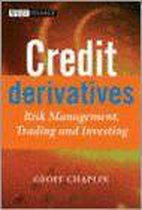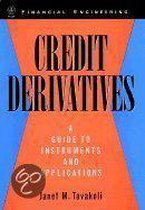Applications of Credit Derivatives. Opportunities and Risks Involved in Credit Derivatives Opportunities and Risks involved in Credit Derivatives
Afbeeldingen
Sla de afbeeldingen overArtikel vergelijken
Auteur:
Harald Seemann
- Engels
- Paperback
- 9783836658423
- 08 oktober 2008
- 104 pagina's
Samenvatting
This study begins with a general introduction to the credit derivatives market and gives arguments for the growth catalysts which have driven the development to the current state. The financial participants in this market are presented as well. A comparison between market risk and credit risk follows to show the clear transition that helped credit risk to become an asset class. After that, a link to the recent Basel II guidelines is established in order to show the policies that banks have to consider when trading with credit risk. Chapter 2 deals with the historical evolution of credit derivatives and classifies different structures. A presentation of the main types of credit derivatives and their contract elements follow; these are mainly credit default swaps (CDS) and collaterized debt obligations (CDO). Chapter 2 also deals with definitions of a credit event and the calculation of risk premiums. Forms of default payment illustrate the possible settlement of a credit derivative contract. Afterwards, an account of the International Swaps and Derivatives Association (ISDA) is presented. This association serves as a supplier of standardized documentation to all market participants and facilitates transactions. Chapter 3 is the key element of this thesis and shows the applications of credit derivatives: they serve as portfolio diversifiers for asset managers, hedging instruments for banks or corporations and offer arbitrage possibilities for hedge funds and other institutions that monitor mispricings in bond and credit markets. This part delivers essential information for the final evaluation of such instruments from a practical point of view in Chapter 5. In Chapter 4, the thesis covers the most important pricing tools for credit derivatives. Three generally accepted and widely used models are presented and evaluated concerning their suitability for various parties. These models vary greatly. Recently, a German governmental organization has set a standard evaluation system in place; whereas multinational investment banks form their own capacities in house or through joint ventures. An efficient valuation system gives market participants a major competitive advantage because they can observe default probabilities on an ongoing basis under changing market conditions. Chapter 5 deals with an evaluation of credit derivatives from a practical point of view and discusses the opportunities and risks involved in credit derivatives. The author concludes with a critical evaluation about the role and responsibility of regulators in this market and a view on the current situation of the global credit markets. AUTORENVITA: Harald Seemann, Diplom-Betriebswirt (FH), 2007 Graduate in European Business Studies at the University of Applied Sciences in Regensburg, Germany. Currently, Mr. Seemann lives in Toronto, Canada and works in the financial services industry.
Productspecificaties
Wij vonden geen specificaties voor jouw zoekopdracht '{SEARCH}'.
Inhoud
- Taal
- en
- Bindwijze
- Paperback
- Oorspronkelijke releasedatum
- 08 oktober 2008
- Aantal pagina's
- 104
- Illustraties
- Nee
Betrokkenen
- Hoofdauteur
- Harald Seemann
- Hoofduitgeverij
- Diplomica
Overige kenmerken
- Extra groot lettertype
- Nee
- Studieboek
- Nee
- Verpakking breedte
- 210 mm
- Verpakking hoogte
- 6 mm
- Verpakking lengte
- 297 mm
- Verpakkingsgewicht
- 271 g
EAN
- EAN
- 9783836658423
Je vindt dit artikel in
- Taal
- Engels
- Boek, ebook of luisterboek?
- Boek
- Studieboek of algemeen
- Studieboeken
Kies gewenste uitvoering
Bindwijze
: Paperback
Prijsinformatie en bestellen
Rapporteer dit artikel
Je wilt melding doen van illegale inhoud over dit artikel:
- Ik wil melding doen als klant
- Ik wil melding doen als autoriteit of trusted flagger
- Ik wil melding doen als partner
- Ik wil melding doen als merkhouder
Geen klant, autoriteit, trusted flagger, merkhouder of partner? Gebruik dan onderstaande link om melding te doen.








